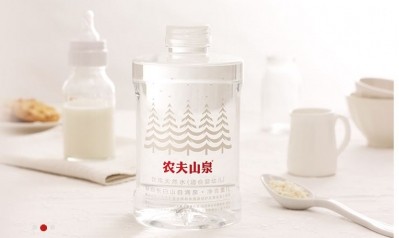Infant nutrition research must focus on Asian needs: Prebiotic review

In a review assessing the role of inulin-based prebiotics on infant health, led by Agus Firmansyah from Universitas Indonesia and published in the Asia Pacific Journal of Clinical Nutrition, researchers state there are unique factors that need to be adressed in the region.
“It is evident that the vast majority of the research on infant nutrition has been performed in the Western world,” they write.
“In view of the fact that especially in the South East Asian region and other Asian countries mal and under-nutrition with its detrimental effects on infants and children has a high prevalence, the role of prebiotics for these conditions should be investigated further.”
The review points out there is a high prevalence of low birth weight and stunting in South East Asia due to vitamin and mineral deficiencies.
While acknowledging that breast feeding remains the “gold standard” for infant nutrition, the researchers point out that it is vital to create formula with the “optimal composition” for when this is not possible and suggest there is evidence to suggest inulin can play a key role.
“The infant formula, besides providing ingredients for energy and building blocks for growth and development, contains added non-digestible oligosaccharides that mimic the features provided by human milk oligosaccharides (HMO) present in breast milk as much as possible.
Mimic effect
“One strong feature of the prebiotic HMO in the breast milk is the resulting bloom of bifidobacteria in the infant gut. Inulin and certain prebiotics can mimic this bifidogenic effect,” they state.
They point out that range of suitable prebiotic ingredients are available for a bifidogenic effect, but add to date native inulin, typically isolated from the chicory plant root, represents an economic way to supplement infant and follow-on formula with prebiotic oligosaccharides.
This has been found to elicit a bifidogenic response and bring the bowel habit closer to that of infants who consume human milk.
However, they conclude there is clearly a need for more research in this area.
“Nevertheless, few of the interventions with inulin or oligofructose on infants and young children have specifically addressed bowel habit as the primary parameter,” they add.
“Remarkably, there are also currently no guidelines on fibre in infant formulas nor follow-on formula for children over two years of age.
“Moreover, intestinal habit issues may be a factor contributing to colic in infants whereby prebiotics could play a role and this aspect deserves further attention.”
Source: Asia Pacific Journal of Clinical Nutrition
2016;25(4):652-675
“Fructans in the first 1000 days of life and beyond, and for pregnancy”
Authors: Agus Firmansyah, et al.



















